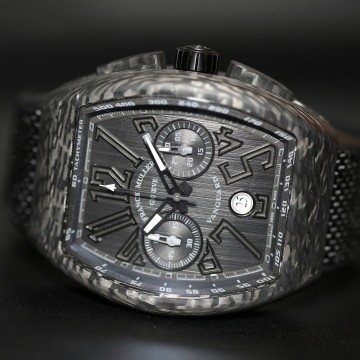Franck Muller WPHH2015 : contercurrent 1/2

Hello Everybody,
- This year, the FHH reduced the number of accreditations to SIHH (even if I stumbled across the traditional parasites… go figure!).
I myself got a reduced accreditation, that explains the low number of reports on the Richemont group’s brands on Foudroyante.
The light side of this mess is that I made time to visit the « Off festival » events. First of all, the Franck Muller WHPP, which I had never before had the occasion to go. It is the most off-centered event from the SIHH, a car is essantial. Besides, a side event is always an opportunity to have another glass of champagne.
It is a ten or so kilometres drive from the center of Geneva (UEN Genevois Staïle), in which a dozen of aggressive and relentless automatic radar devices keep watching you like the eye of Sauron. Hardly had I reached speeds of 300km/h with Inceptor IV than I had to slam on the brakes to avoid leaving my licence to the authorities (especially as I don’t expect them to give it back to me next time). A lot of rubber burned on the tarmac for so few kilometers.
I arrive the in Genthod, on the road to Malagny. I see a poster “Franck Muller” so I immediately branch off the next exit. I cross a somber path lined with sinister trees, wading in a muddy path at the end of which is a ruined manor house. No light, no one… a frightening moment when the Wonder Week turns into a horror movie.
It is obviously a wrong adress… Franck Muller is a bit further.
I finally arrive in Franck Muller’s premises, and I go from Dracula to Bilbo the Hobbit. The architecture of the floodlit buildings arouses delight, just like Hobbits discovering the “Elvish Halls” in the Tolkien’s novels.
The main building of the FM’s manufacture was designed by architect Edmond Fatio in 1905. The manor house combines two influences: the design of Swiss and German farms with some codes borrowed from shooting lodges, in particular the large windows. Two other recent constructions inspired by this building and a fourth one, which is temporary, complete this manufacture welcoming 700 employees.
- My mate Jean-François “Jeff” Ruchonnet welcomes me on the site, as a new director of searh and innovation. After the kiss ceremonial and the customary teasing (the politically correct forbids me to retranscribe it here), we have a look around at the novelties. Three pieces particularly attract my attention:
First of all, one of the masterpieces of this Wonder Week:
The Franck Muller Gravity:
Reviewing the watches presented by FM, I stumble across this stuff, a gigantic gaping hole in the middle of a barrel case, with a gargantuan tourbillon in it!! Sucked up by the space, I find myself navigating between its disproportionate cogs.
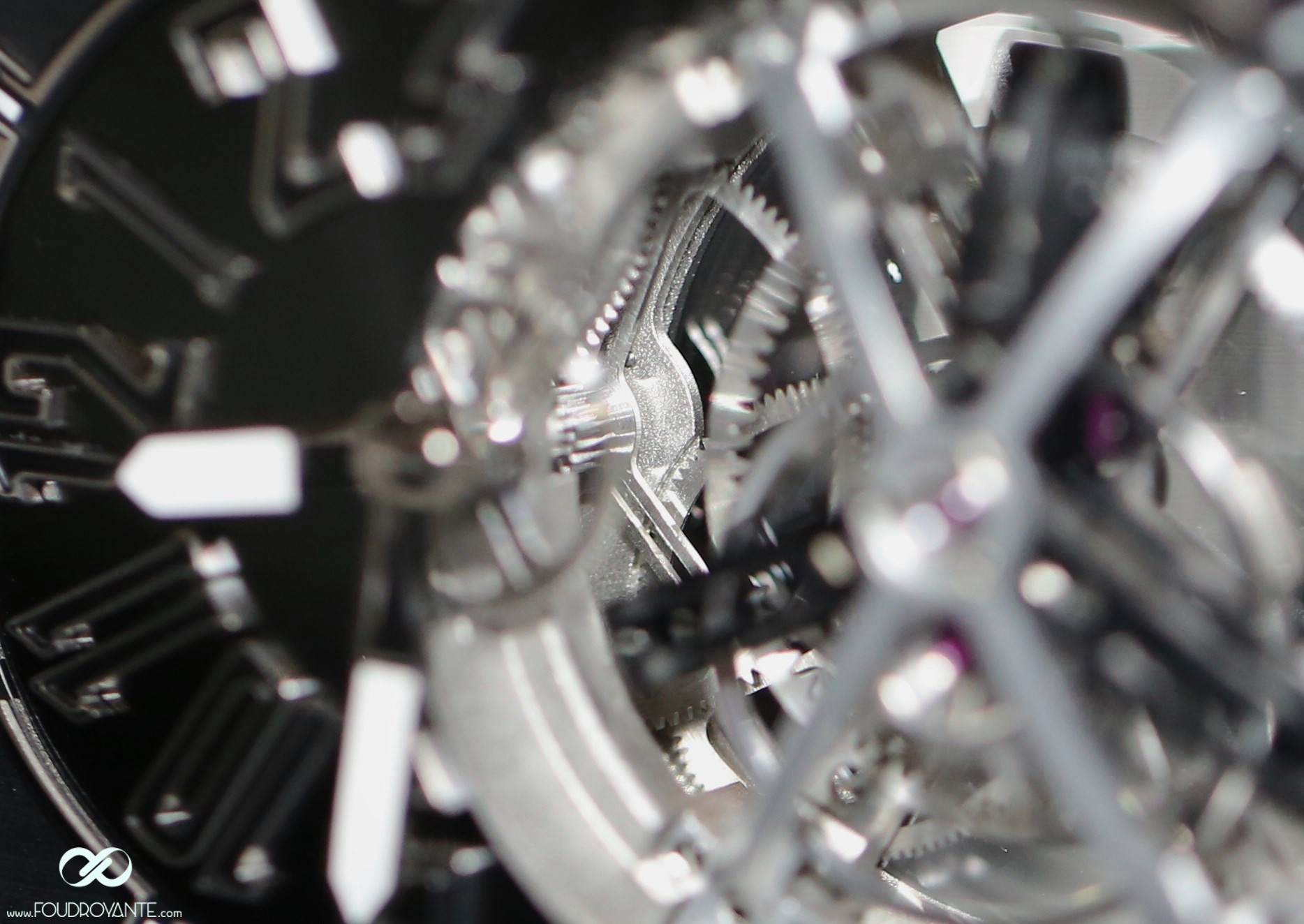
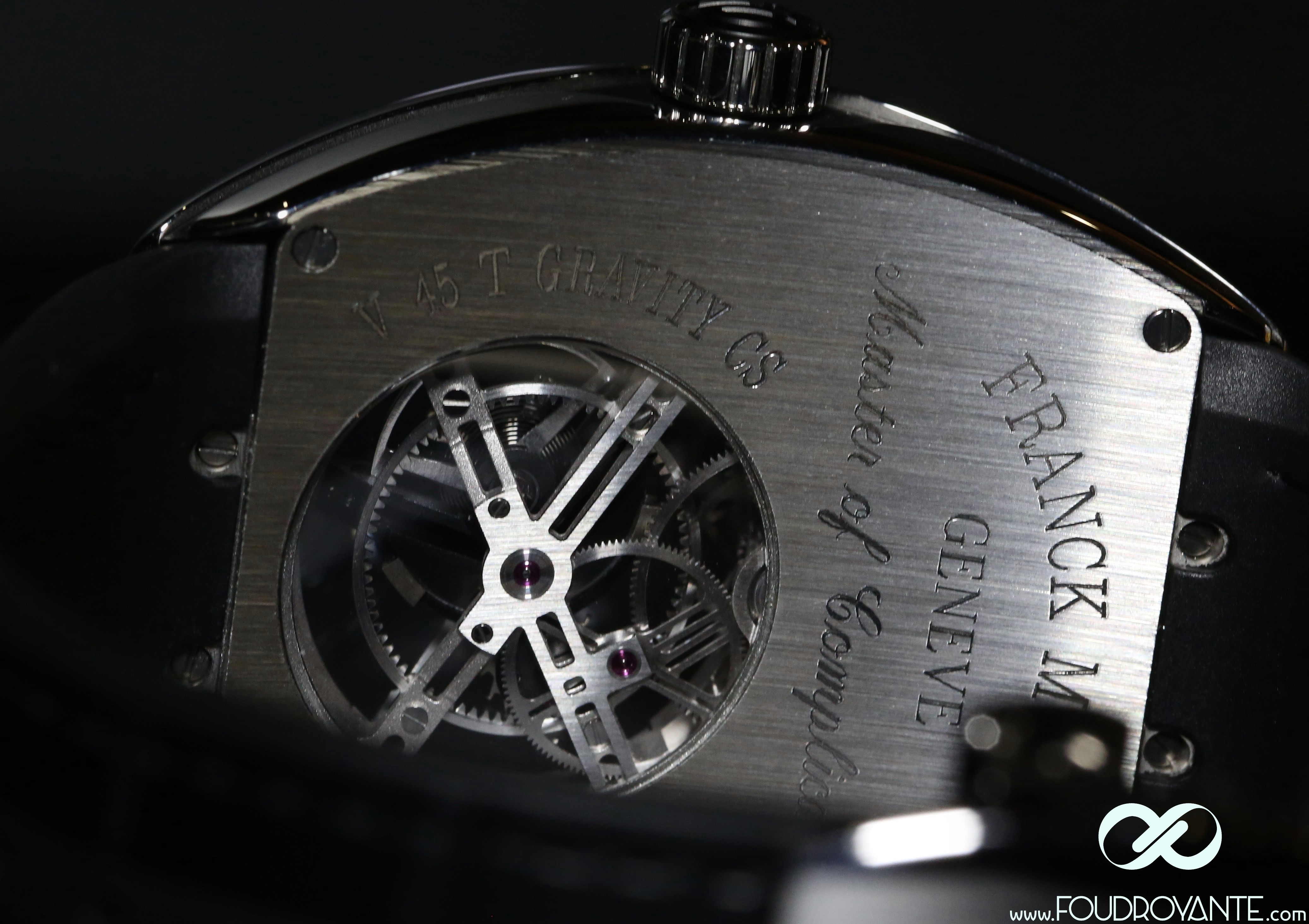
- The concept is simple: put a tourbillon as big as possible in a mechanical watch. That reminds me the former AMG engines, those existing before the detestable “downsizing” fashion: if it takes a well-greased shoehorn to bring in the V8 M156 AMG 6.3L under the hood of a C-Klass, fit a tourbillon so big in a medium-sized barrel case is a challenging task!
To give you an idea: your girlfriend is sure she can get into the 34 she bought on sale (so cute!!) and finally does it by dint of privations: it is nothing compared to this tourbillon.
The press kit gives the size: the frame of 21,2mm in diameter ( about 25mm for the opening), compared with a Valjoux 2824 which is 25.6mm in total. So this tourbillon occupies the space of a regular movement.
Necessarily, the complete movement reaches a very consequent size: 38.7mm x 39.6mm x 8.7mm, in a barrel case which is only 44mm x 53.7mm x 15.1mm.
Still as comparison, to make a more precise idea, a Tudor Pelagos makes 42mm although it comes with a 25mm ETA2824…
Succeed in casing-up the Gravity is a difficult task, in particular on the flanks which only leave a 3mm space on each side to get in the case and place the movement.
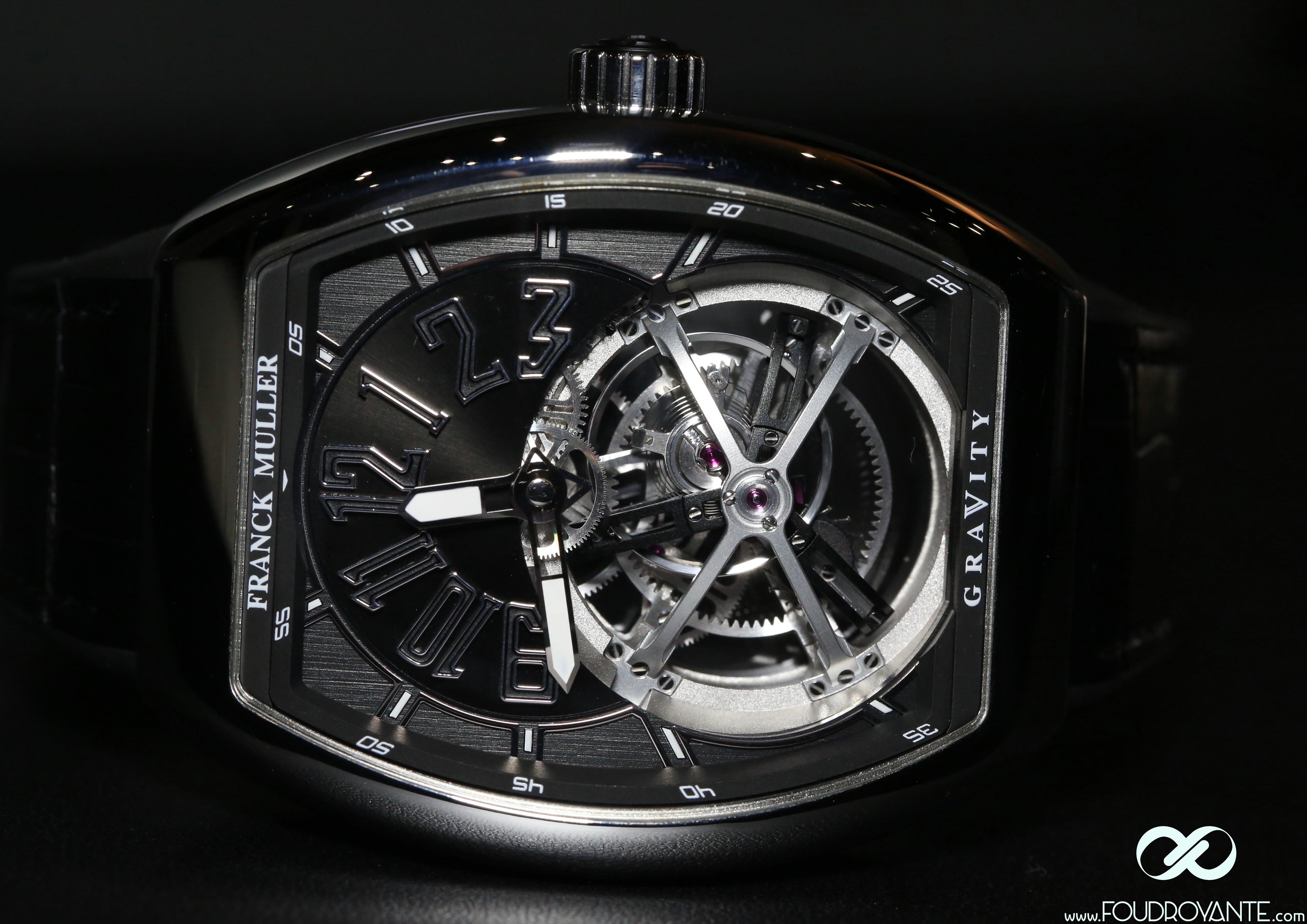
The press release also refers to Abraham Louis Breguet’s searches and his presumed will to find a solution to offstet the effects of gravity on the escapement of a pocket watch vertically worn.
Of course, a thin tourbillon in a wristwatch is not very useful in chronometry, as this kind of piece is always in intermediate positions.
Apart from some rotating tourbillons, such as Prescher, Greubel Forsey, Girard Perregaux or Jlc, which can claim to bring a sofisticated technological solution ( still for half-a-million), a thin tourbillon only has two real purposes: prestige and fun.
Concerning the prestige, I leave you judge, it’s not exactly the category that has the Patek tourbillon hidden by a full screen, in the Calvinist style, that is totally sadomasochist.
- Here is the opposite, it’s a visual outpouring, a clockwork orgy, a cornucopia of mechanisms. Even better than prestigious, it is fun.
Back in the days, when I was just new to watchmaking passion, I asked this question to one my friends:
“-What is the use of a tourbillon?
– Nothing, but when you get bored to death during a meeting of the board of Directors, you just look at it and it passes the time.That’s the best explenation I’ve been given!
In my former job at Greul Forsey’s, I once wore a gorgeous 24sec. Tourbillon during a meeting. I was so fascinated that this endless meeting was over in a flash.
Getting paid to admire the convolutions of a tourbillon, what’s best?
This Gravity will make your meetings go withing a split second. The spectacle of this huge frame is absolutly fascinating, and even more than hypnotic, it’s didactic.
No need for 3D designs, computer-generated images, Icore, or other 3Dfx. The slowly rotating frame and the relatively low frequency of the balance, 21600 a/h for 120h of RdM, open to a next level of watchmaking mechanical understanding, through observation.
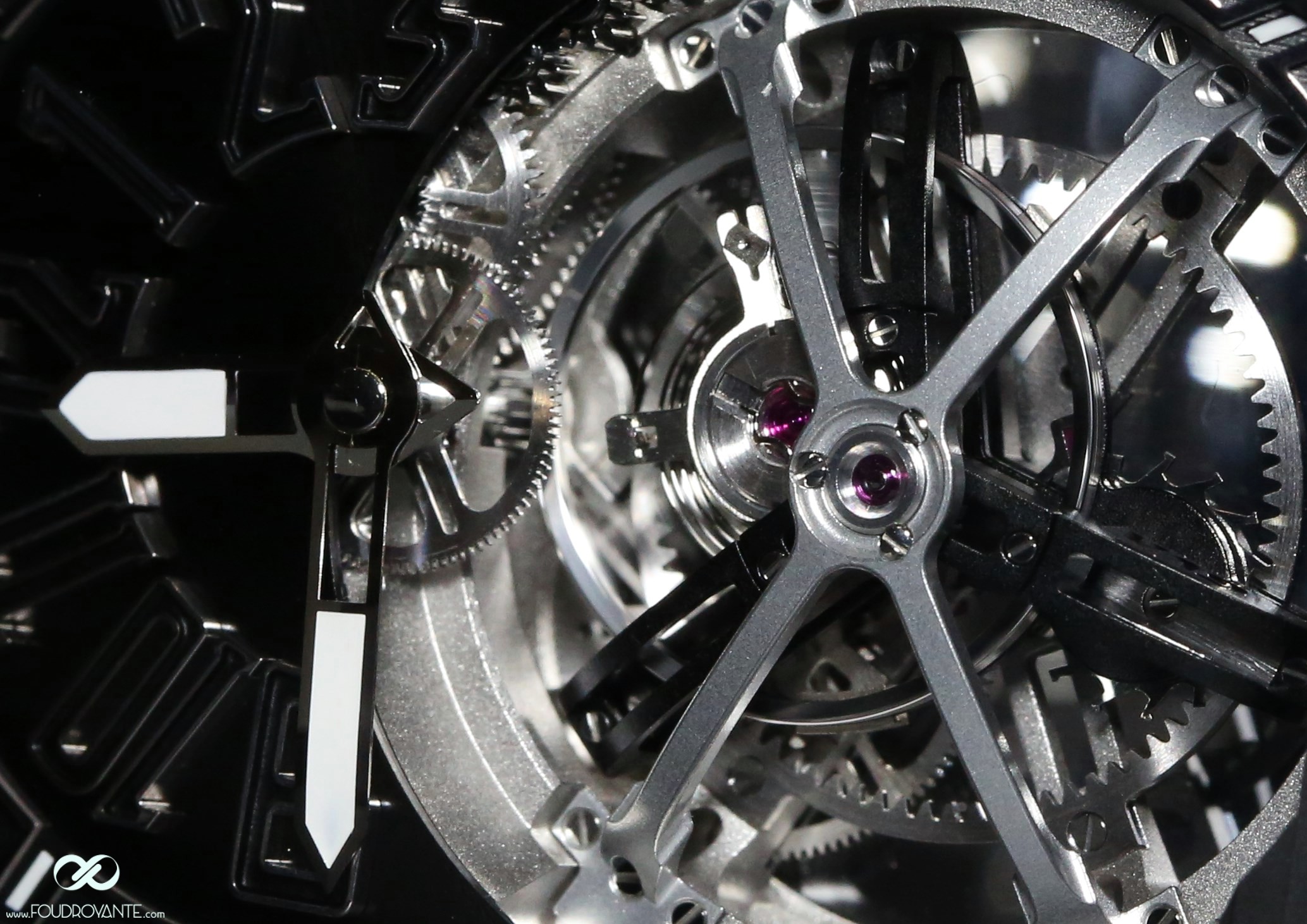
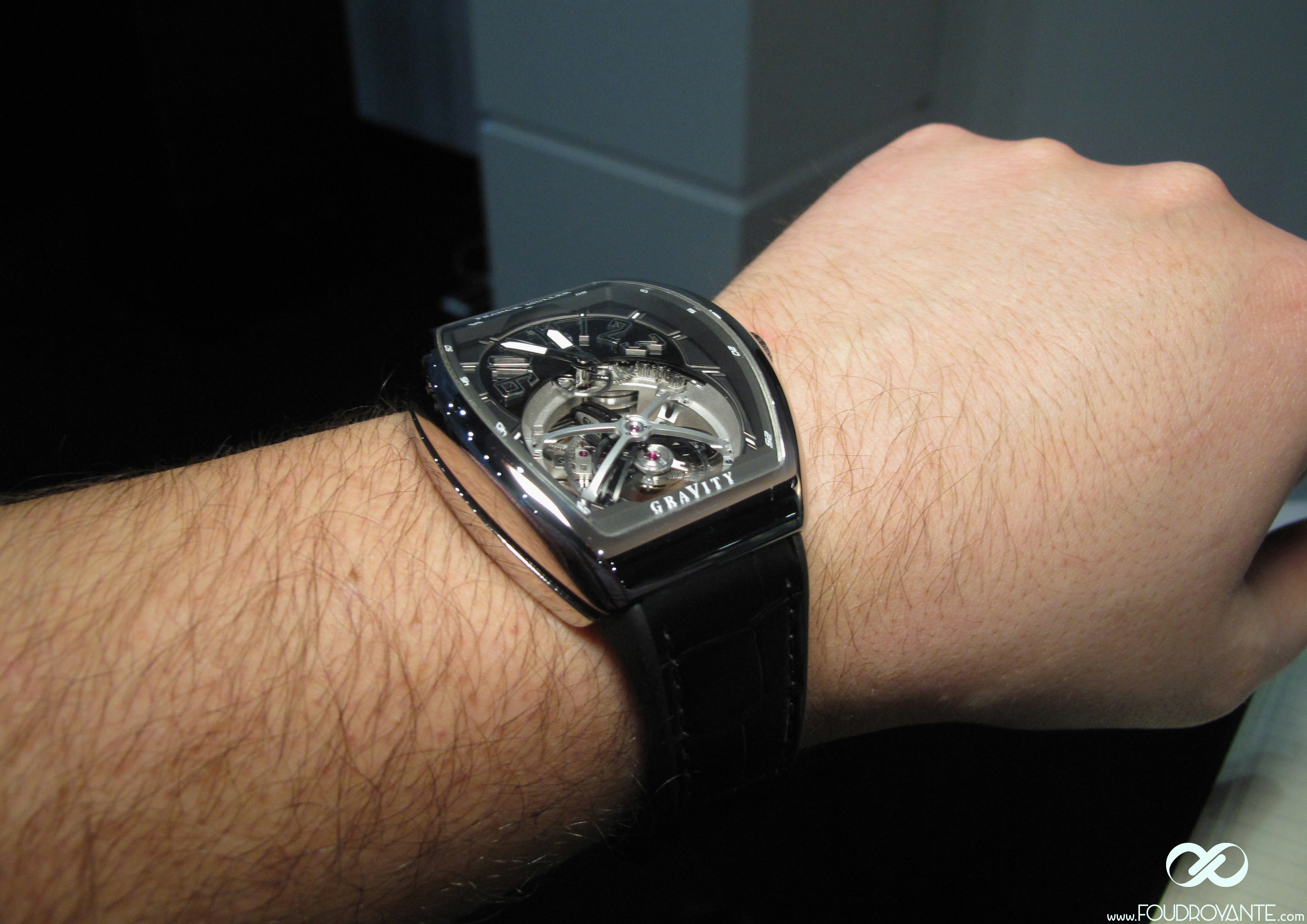
The large moment of inertia of the set balance/tourbillon (that is to say: the torque of the barrel spring necessary to start the system) imposes the selection of low frequency. Good thing, low frequencies remain the most beautiful homages to classical chronometry, a bit like the big atmospheric engine blocks. The high frequency (28800 and above), the newfashion of mechanical watchmaking, can be compared with the automobile engine downsizing: we are supposed to win in energy efficiency what we lose in mechanical nobility.
- That is one of the paradoxes of this watch: in particular in the titanium version of this review, it looks ultra-contemporary; However, mechanically speaking, it is traditional in the best sense of the word. One of the rare concessions to modernity is the tourbillon frame: of an elliptical shape, it is made of aluminium in order to reduce the mass and to decrease the associated moment of inertia.
With the 21.2mm tourbillon, no need for magnifying glass; It is rather necessary to move back of a meter or two. Then we look at what’s aroud the tourbillon: the case.
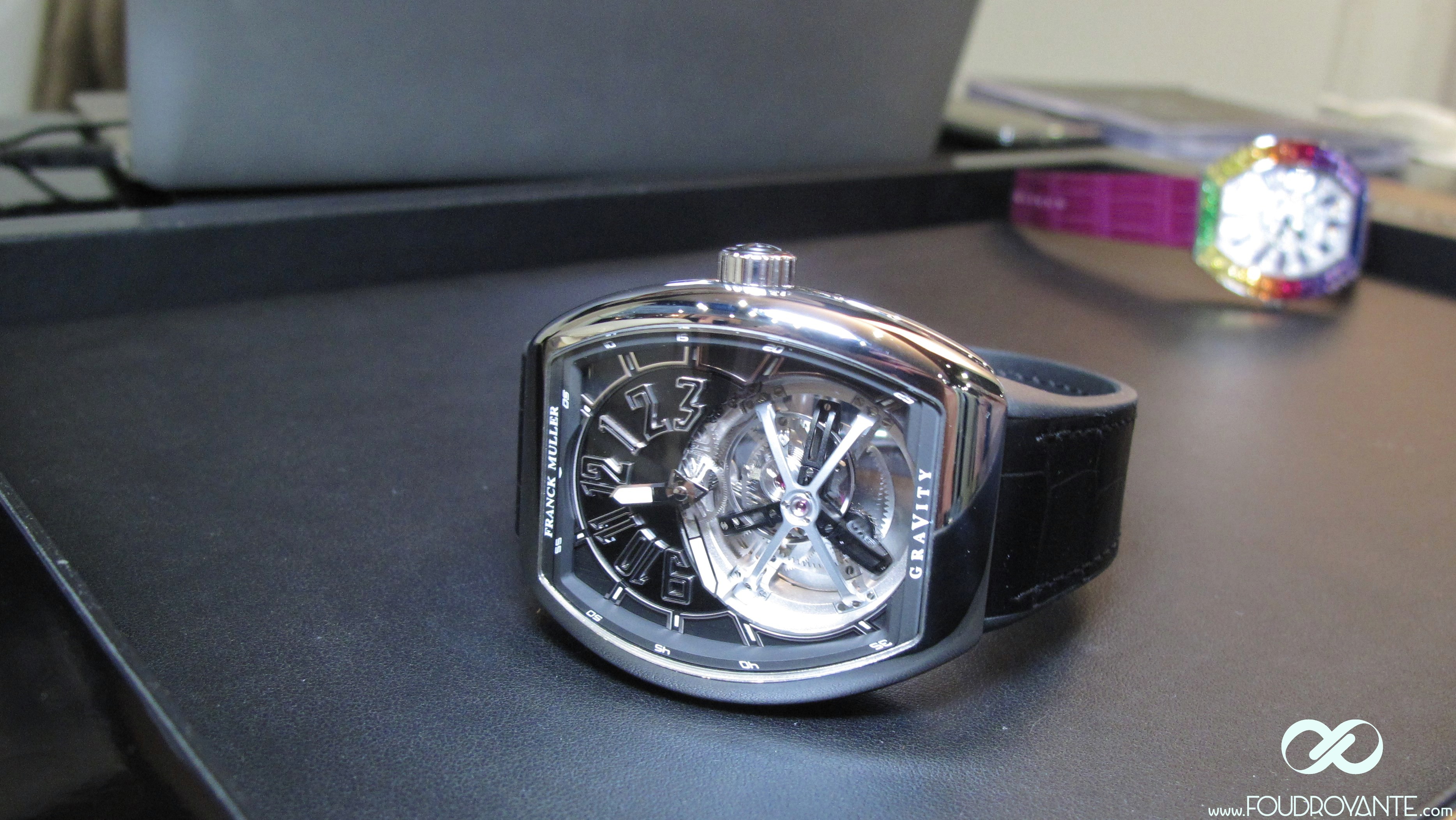
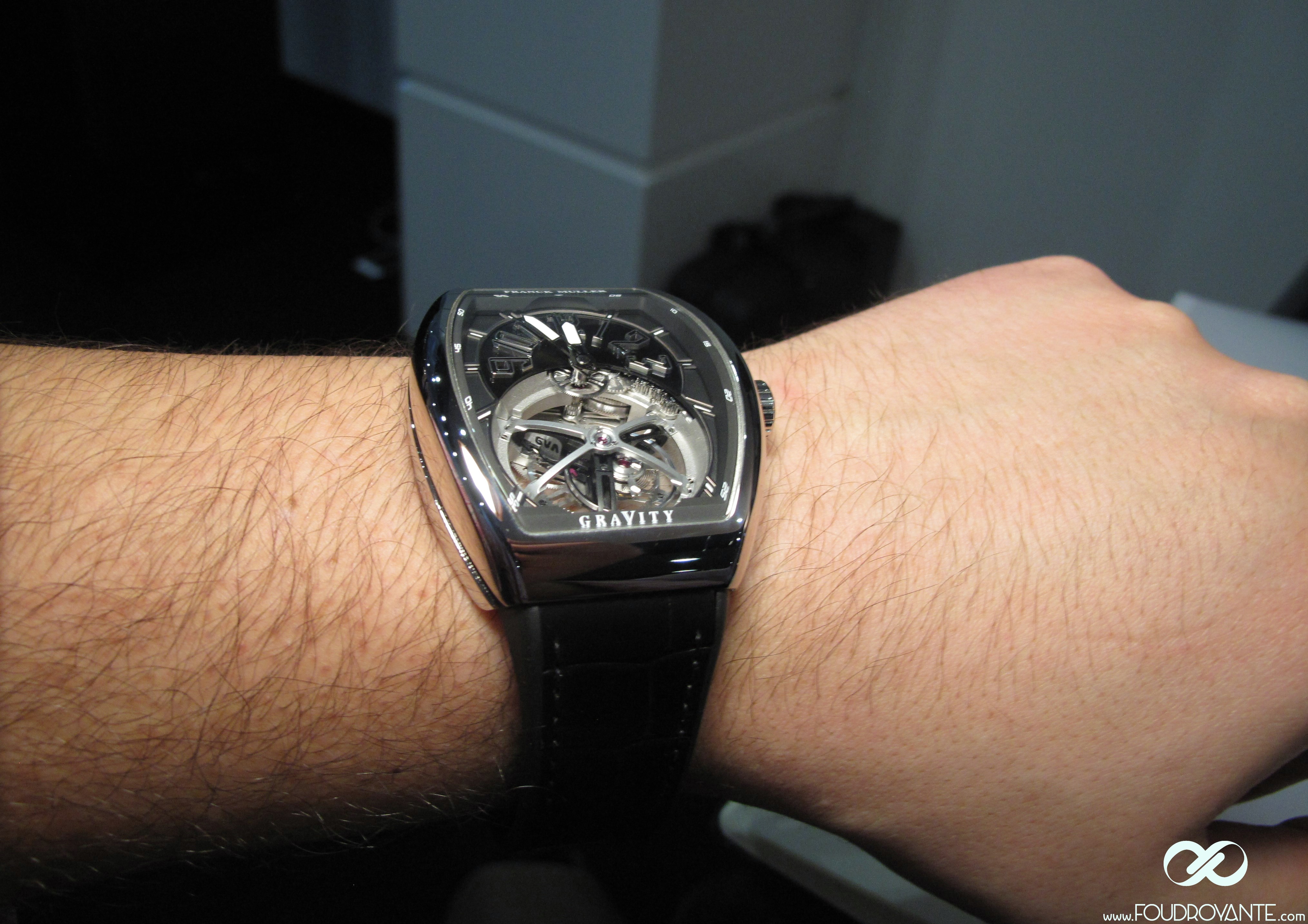
The watch presented in this review is made of titanium, it is 44mm wide and 53,7mm tall, horns included. This last figure should not mislead you, Franck Muller Gravity looks pretty stocky, medium-sized.
The surprising aspect of this titanium case is when we put on the watch on the wrist: it perfectly marries with the curve of the arm.
We find the same sensations as with German car seats, which can be adjusted according to the width of the back. Besides, the thickness is visually incredibly well hidden. Let us not kid ourselves, The 15.1mm make the case relatively thick, but we do not notice it unless perpendicularly observing the stature. The combination of the wide side groove and the very strong rounding aroude the casing edge contributes to limit totally the effect of thikness. This ingenious construction characterizes the great mastery of Franck Muller’s designers.
The dial and the hands are fairly minimalist (we will return to it more extensively later in the review on Vangard Carbone). They return on the Vangard collection lignes, an adapation sport-chic and also a bit military of the classy Franck Muller watches. This simplicity is welcome, there should be nothing upstaging the tourbillon. Ever.
The back of the watch is transparent and beside the gaping opening of the tourbillon, the bottom of the case is brushed and engraved in a cursive script, which of course is a nod to watchmaking in the 19th century.
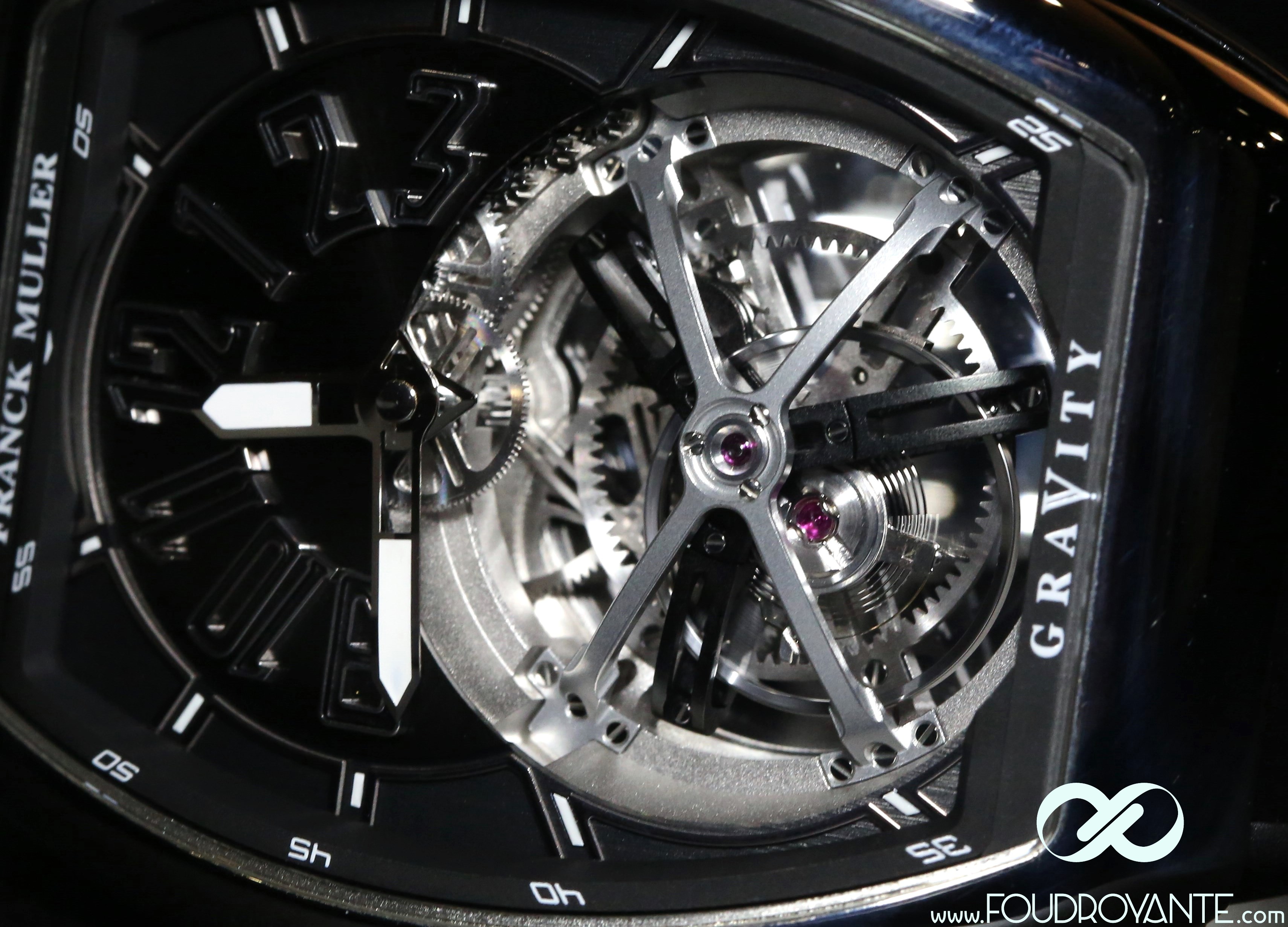

Public price: CHF 105,000, same in euros, and a little bit more in dollars. That’s too expensive for me, but it is reasonable according to tourbillons market. It should be pointed out that this market is a bit saturated, the alleged prestige of this artifice having lead to an overproduction of beautilful but not very original products, expensive without any real justification.
The Franck Muller Gravity steps aside from its competitors with a price still within the average of the prestige houses proposing an innovating tourbillon.
- To conclude, beyond the price, the finishes, the Cartesian justifications of an irrational thing, The Gravity is a must-have, in so far as it makes us fall back into early childhood: observing this excessively sized tourbillon, we feel like we’ve gone back in time, tuching daddy’s tourbillon with baby fingers like a rattle. Priceless.
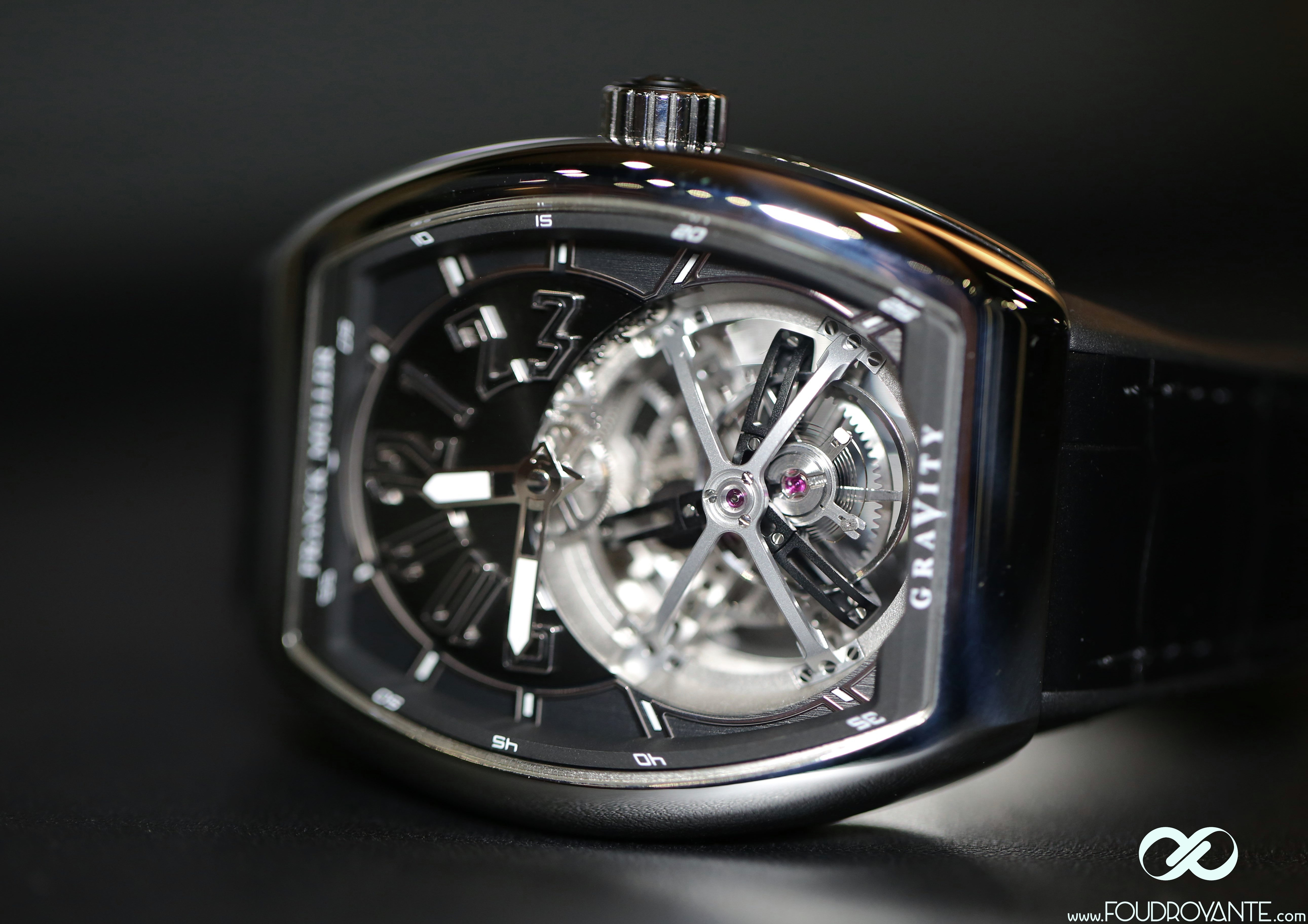
All the best.
Pifpaf.
